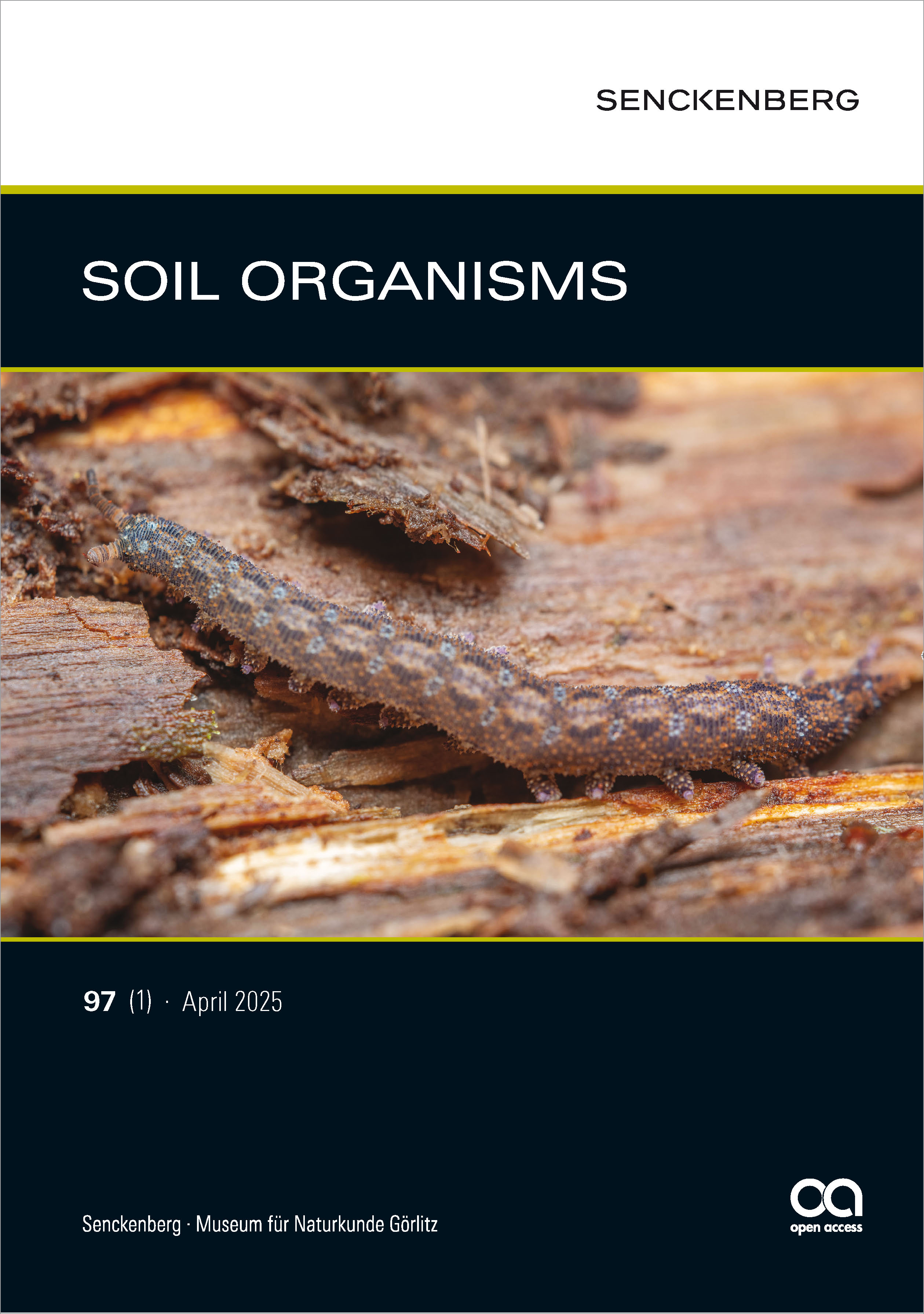Formica sentschuensis Ruzsky 1915 and F. tibetana n. sp. – two unique and little known Formica species from Tibet (Hymenoptera: Formicidae)
DOI:
https://doi.org/10.25674/452Keywords:
Formica ants, Tibetan Plateau, numeric morphology-based alpha-taxonomy, nest architecture adaptationAbstract
This study presents the taxonomic description and ecological data of two unique ant species, Formica sentschuensis Ruzsky 1915 and Formica tibetana n.sp., found in the high-altitude grasslands of the Tibetan Plateau. Based on expeditions conducted in 2011 and 2012, F. tibetana n.sp. was identified as a distinct species. It develops locally an unusual nest architecture showing a flat, hardened, south-facing upper surface that optimizes solar heat absorption for early brood development. Morphological analyses revealed that F. tibetana n.sp. and F. sentschuensis form a common clade that supposedly split off near to the root of the genus Formica. Both species are characterized by a rare anteromedian clypeal excavation, a feature otherwise known for the Palaearctic only in Formica sanguinea Latreille, 1798 and several Nearctic species of the Formica sanguinea group. Morphology does not indicate a close relatedness of F. tibetana n.sp. and F. sentschuensis with members of the Formica sanguinea group which is supported by full absence of dulosis and independent single-queen colony foundation confirmed for F. tibetana n.sp. A stereomicroscopic analysis of morphological traits, including shape characters, seta characters and absolute body size proved that both species are clearly separable on worker individual level. This study provides insights into the biology of F. tibetana n.sp. and shows that the species plays a significant role in the Tibetan grassland ecosystems.
Downloads
References
Chang Y. & He D. (2002): Ant fauna in the northwestern regions of China. – Current Zoology (formerly Acta Zoologica Sinica) 48(3): 322-332.
Dlussky, G. M. (1965): Ants of the genus Formica L. of Mongolia and Northeast Tibet (Hymenoptera, Formicidae). – Annales Zoologici 23 (3): 15-43.
Li, Z.Y., Xu, Z.H., Zhang, X.M., Li, T., Yin, X.D., Duan, J.H. (2023): Ant Species Diversity in the Central and Northern Parts of the Western Sichuan Plateau in China. – Diversity 15: 935. https://doi.org/10.3390/d15080935
Ruzsky, M. (1915): O murav'yakh Tibeti i yuzhnoij Gobi. Po materialam sobrannym ekspediciei polkovnika P. K. Kozlova. – Ezhegodnik Zoologicheskago Muzeya Imperatorskoi Akademii Nauk 20: 418-444. Note: this paper was intended for publication in volume 19 (1914) of this journal, page 480 onwards, but did not appear in 1914 due to the outbreak of 1st World War.
Seifert, B. (2017): The ecology of Central European non-arboreal ants – 37 years of a broad-spectrum analysis under permanent taxonomic control. – Soil Organisms 89(1): 1-67
Seifert, B. & L. Panier (2007): A method for standardized description of soil temperatures in terrestrial ecosystems. – Abhandlungen und Berichte des Naturkundemuseums Görlitz 78: 151-182.
Seifert, B. & Schultz, R. (2021): A taxonomic revision of the Palaearctic ant subgenus Coptoformica Müller, 1923 (Hymenoptera, Formicidae). – Contributions to Entomology 71(2):177-220. DOI: 10.21248/contrib.entomol.71.2.177-220
Wang, Y., Lehnert, L.W., Holzapfel, M., Schultz, R., Heberling, G., Görzene, E., Meyer, H., Seeber, E., Pinkert, S., Ritz, M., Fuh, Y., Ansorge, H., Bendix, J., Seifert, B., Miehe, G., Long, R.J., Yang, Y.P., Wesche, K. (2018): Multiple indicators yield diverging results on grazing degradation and climate controls across Tibetan pastures. – Ecological Indicators 93: 1199–1208.
Downloads
Published
Issue
Section
License
Copyright (c) 2025 Roland Schultz, Bernhard Seifert

This work is licensed under a Creative Commons Attribution 4.0 International License.
Soil Organisms is committed to fair open access publishing. All articles are available online without publication fees. Articles published from Vol. 96 No. 3 (2024) onwards are licensed under the Creative Commons Attribution 4.0 International (CC BY 4.0) license. Articles published from Vol. 80 No. 1 through Vol. 96 No. 2 are available under the previous terms, allowing non-commercial, private, and scientific use.





